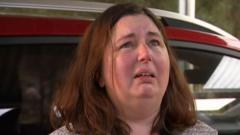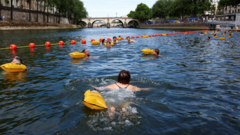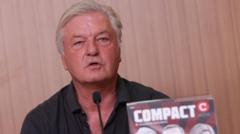A recent study reveals that vaping rates among Australian teens have decreased following the government's new regulations, with significant drops reported. Health Minister Mark Butler expresses optimism about the ongoing efforts to reduce youth vaping and smoking.
Study Shows Decline in Vaping Among Australian Youth Post-Ban

Study Shows Decline in Vaping Among Australian Youth Post-Ban
Research indicates fewer school-age children in Australia are vaping following the government's ban on disposable vapes implemented last year.
The trend of vaping among school-age children in Australia has shown a noteworthy decline, according to recent findings from Cancer Council Australia’s nationwide study, Generation Vape. This decrease follows the government's introduction of a ban on disposable vapes, which went into effect last year. Statistics reveal that the percentage of vapers among 14 to 17-year-olds fell from 17.5% at the beginning of 2023 to 14.6% by April, marking a positive shift in public health efforts.
Health Minister Mark Butler acknowledged this progress, noting that vaping rates among young Australians have "now turned the corner." The government has also confiscated over 10 million illegal vapes in the past year in an effort to curb youth nicotine habits. The new laws prohibit the manufacturing, importing, advertising, and supply of single-use vapes in Australia, with nicotine vapes now available only via prescription from pharmacies. Despite these regulations, a substantial black market for nicotine vapes has persisted.
Similar developments have been observed in the UK, where disposable vape sales were banned in June. While vaping is deemed safer than traditional cigarettes—given that it lacks harmful tobacco—health experts caution that it is not without risks, and the long-term health implications remain uncertain.
Concerns over youth vaping have driven these legislative changes, with Butler emphasizing that these products risk establishing a new generation of nicotine addicts. Generation Vape's latest survey also uncovered that 85.4% of young respondents, drawn from a sample of around 3,000, had never engaged in vaping. Furthermore, interest in vaping appears to be waning among teenagers, as evidenced by a decrease in curiosity and the sentiments of shame felt by many current and former users towards their vaping habits.
Though many teenagers report being unable to purchase vapes independently, tobacconists and vape shops continue to be significant suppliers, despite the enforcement of new regulations. In a recent interview with the Australian Broadcasting Corporation (ABC), Butler expressed confidence that Australia has surpassed the peak of vaping, acknowledging the continuing challenge posed by both vaping and illicit tobacco sales. Tobacco remains the leading preventable cause of death in Australia, with over 24,000 fatalities each year.





















